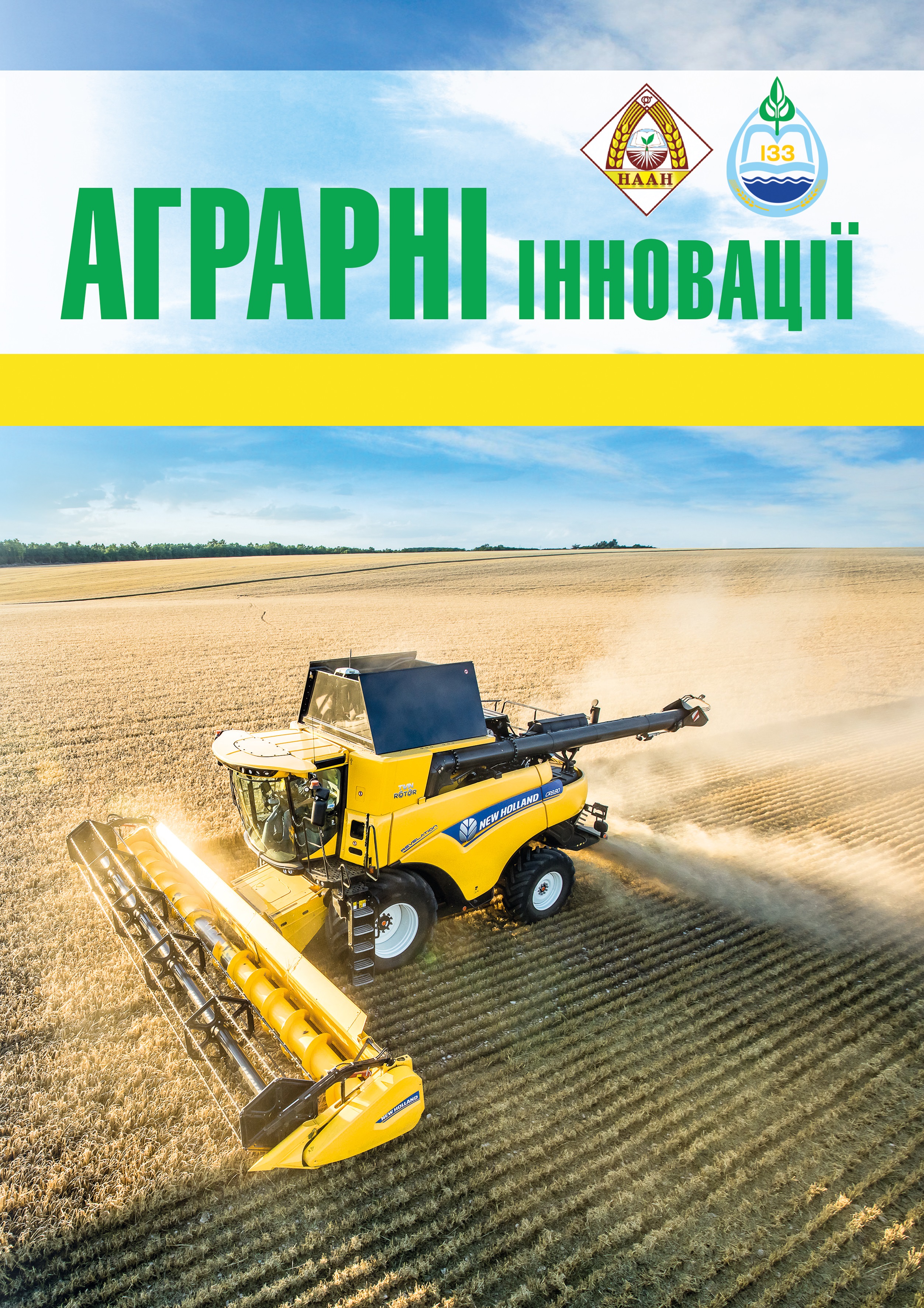ADAPTIVE ABILITY OF WINTER WHEAT VARIETIES IN THE CONDITIONS OF THE SOUTHERN STEPPE OF UKRAINE
Abstract
Aim – to determine the adaptive characteristics of winter wheat varieties of the selection which was devel-oped in the Irrigated Agriculture NAAS, suitable for cul-tivation in conditions of irrigation and waterless valleys in conditions of the drought South Steppe of Ukraine. Methods – the field, laboratory, genetic-selection , sta-tistical and retrospective methods were used. Оver the 130-years period the retrospective yield analysis of the main grain crops in the arid Steppe zone showed that the annual yield increase of the main grain crops ranged from 5 kg/ha to 21 kg/ha. The most noticeable increase in yield was recorded in the winter wheat – it has gone up 5.65 times, and increased from 6.00 to 33.9 centner/ha, and on the irrigated lands – to 52.1 centner/ha, which exceeds the figures of the nineteenth century beforе by a factor of 8,7 times. The annual yield increase amounted to 0.34 centner/ha as a result of the usage of the new varieties and the improvement of the cultivation technol-ogies. The new wheat varieties Kohana, Kosheva, Maria, Soborna, XN Akvarel have a high yield potential under the irrigation conditions of 9.25–10.35 t/ha. However, fluctuations in the grain yield without irrigation are quite high. The drought hardness coefficient of these varie-ties was significantly different – from 0.29 (XH Akvarel) to 0.43 (Kosheva), which indicates the different reac-tion of these varieties to improvement (or deterioration) of growing conditions. To distributе the varieties accord-ing to their suitability for certain growing conditions, the parameters of environmental plasticity (bi) and stabil-ity (S2di) were calculated. The homeostatic varieties havebeen established, which are characterized by a weak response to changes in the growing conditions and they provide stable yields under irrigation conditions and with-out irrigation. This group includes the Anatolia, Ledya, Rosinka, Burgunka varieties. The varieties Konka, Maria, Sobornaya, XN Akvarel are classified as an intensive type with a high genetic potential but with a low stability of yield manifestation. These varieties have a very high potential yield (over 10 t/ha), but they require careful and timely implementation of the technological operations under the irrigation conditions. The varieties Kohana, Kosheva, Kherson 99, Ovidii have a suitable reaction rate for improving the growing conditions, and a restrained reac-tion to the unstable weather conditions and the agricultural background fluctuation. These varieties have the highest demand in proceedings and can be sown both during irri-gation and without irrigation. The most stable and predict-able increases (decreases) of a yield have the Burgunka, Anatolia, Maria, Rosinka, Khersons awnless, XN Akvarel varieties in the various of agro-ecological gradients.
References
2. Godfray H. C. J., Beddington J. R., Crute I. R., Haddad L. et al. Food security: The challenge of 9 billionptople. Science. 2010. Vol. 327, Iss. 5967. P. 812–818. doi: 10.1126/science.1185383.
3. FAOSTAT:http://www.fao.org/faostat/ en/01.02.2019#data/QC [Електронний ресурс]. Режим доступу: (дата звернення 01.02.2019).
4. Crop explorer: global crop production analysis [Електронний ресурс]. Режим доступу: http://www.usda (дата звернення 02.12.2019).
5. Tester M., Langridge P. Breeding technologies to increase crop production in a changing World. Science. 2010. Vol. 327, Iss. 5967. P. 818–822. doi: 10.1126/science.1183700.
6. Gilliham M., Able J. A., Roy S. J. Translating knowledge about abiotic stress tolerance to breeding programmers. Plant Journal. 2017. Vol. 90, Iss. 5.P. 898–917. doi: 10.1111/tpj.13456
7. Созінов О. О. Нові рубежі в селекції рослин. Вісник аграрної науки. 2000. №12. С. 22-24.
Hudzenko V. M., Polishuk T. P., Babii O. O., Khudolii L. V. Productivity and adaptability of Myronivka spring barley varieties of different breeding periods. Plant Varieties Studying and Protection, 2018, 14(2). Р. 190–202. https://doi.org/10.21498/2518-1017.14.2.2018.134766
9. Гадзало Я. М., Гладій М. В., Саблук П. Т., Лузан Ю. Я.Розвиток аграрної сфери економіки в умовах децентра-лізації управління в Україні. Київ : Аграрна наука, 2018. 328 с.
10. Доспехов Б. А. Методика полевого опыта (с основами статистической обработки результатов исследований) [5-е изд., доп. и перераб.]. Москва : Агропромиздат, 1985. 351 с.
11. Методика польових і лабораторних досліджень на зрошуваних землях / за редакції Р. А. Вожегової. Херсон : Вид. Грінь Д.С., 2014. 286 с.
12. Eberhart S. A., Russell W. A. Stability parameters for comparing varieties. Crop Science. 1966. Vol. 6, N 1. P. 36–40.
13. Орлюк А. П. Теоретичні основи селекції рослин. Херсон : Айлант, 2008. 517 с.
14. Исторический очеркъ деятельности Херсонскаго Губернскаго Земства за 1865-1899 гг. Выпускъ ІІІ. Издание Херсонсой Губернской земской Управы. Херсонъ, 1906. 276 с.
15. Базалій В. В., Коковіхін С. В., Плоткін С. Я., Іванів М. О. Адаптивна характеристика нових гібридів кукуру-дзи в екологічних пунктах. Таврійський науковий вісник. 2011. Вип. 75. С. 3-14.






